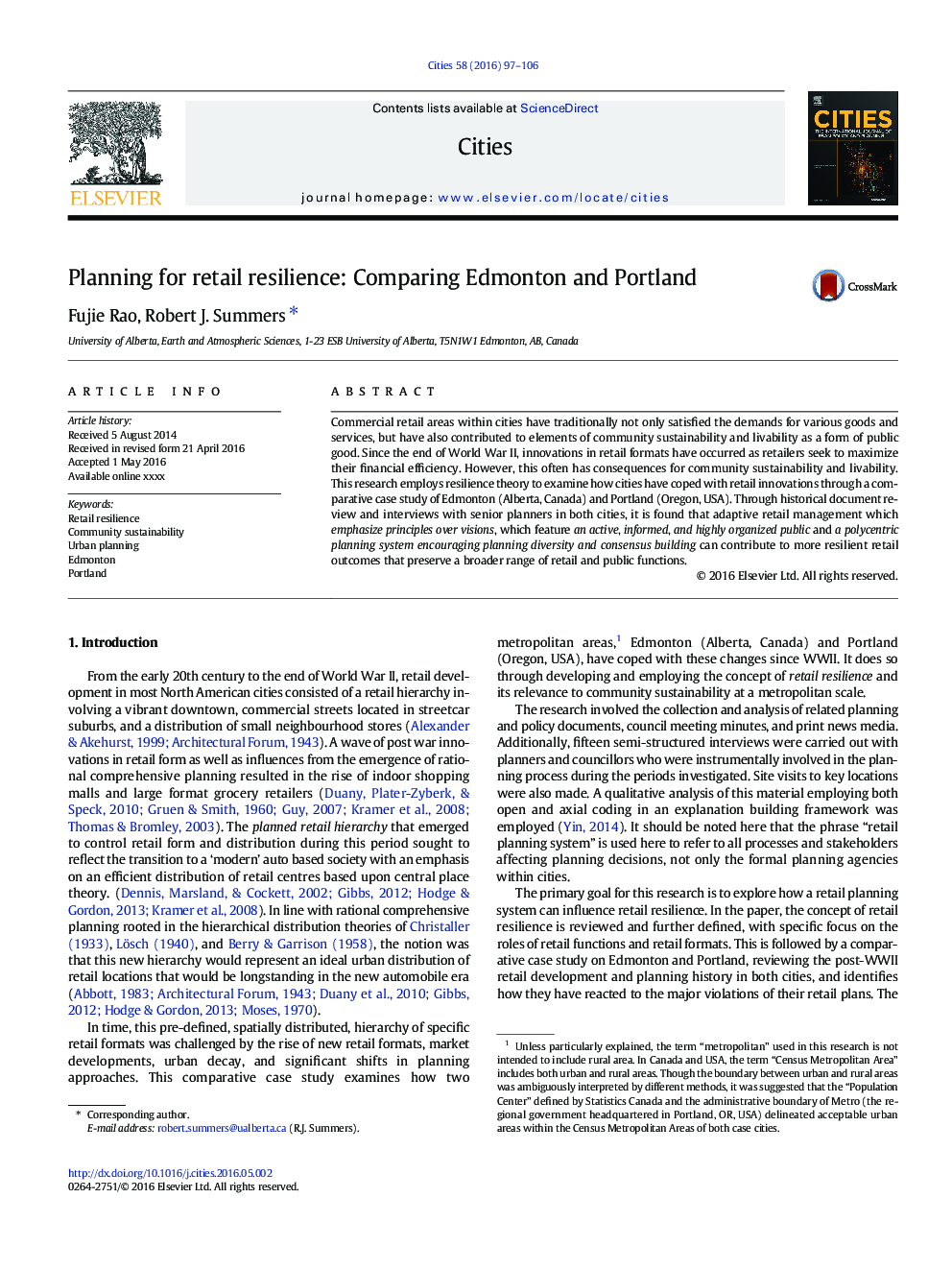| Article ID | Journal | Published Year | Pages | File Type |
|---|---|---|---|---|
| 7417966 | Cities | 2016 | 10 Pages |
Abstract
Commercial retail areas within cities have traditionally not only satisfied the demands for various goods and services, but have also contributed to elements of community sustainability and livability as a form of public good. Since the end of World War II, innovations in retail formats have occurred as retailers seek to maximize their financial efficiency. However, this often has consequences for community sustainability and livability. This research employs resilience theory to examine how cities have coped with retail innovations through a comparative case study of Edmonton (Alberta, Canada) and Portland (Oregon, USA). Through historical document review and interviews with senior planners in both cities, it is found that adaptive retail management which emphasize principles over visions, which feature an active, informed, and highly organized public and a polycentric planning system encouraging planning diversity and consensus building can contribute to more resilient retail outcomes that preserve a broader range of retail and public functions.
Keywords
Related Topics
Social Sciences and Humanities
Business, Management and Accounting
Tourism, Leisure and Hospitality Management
Authors
Fujie Rao, Robert J. Summers,
